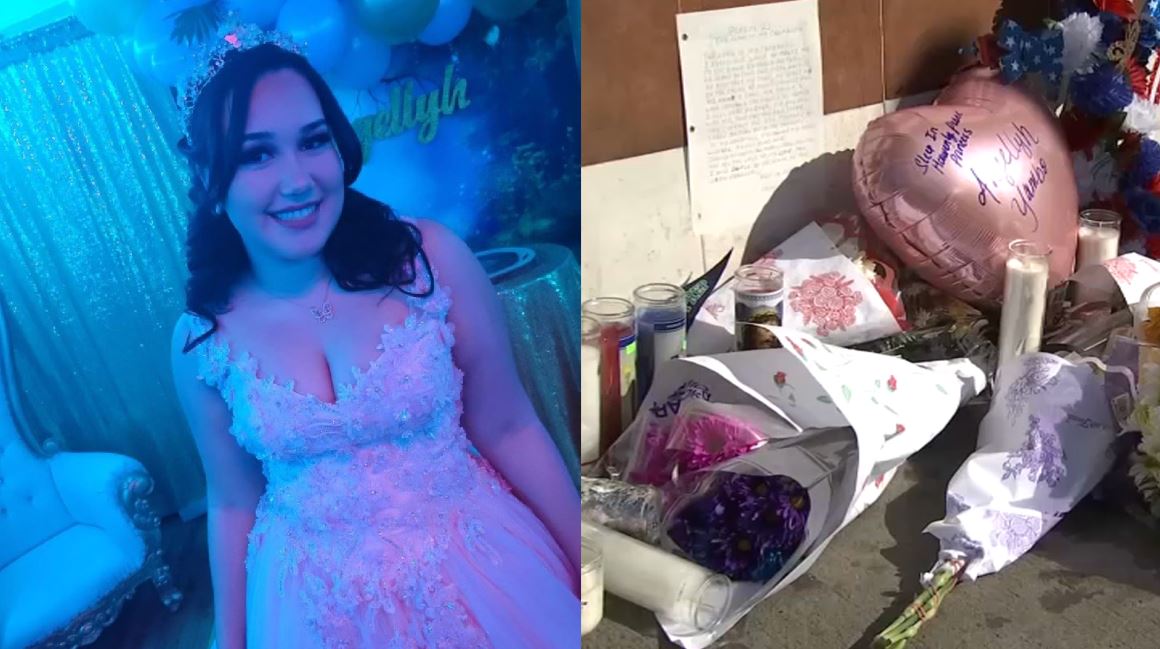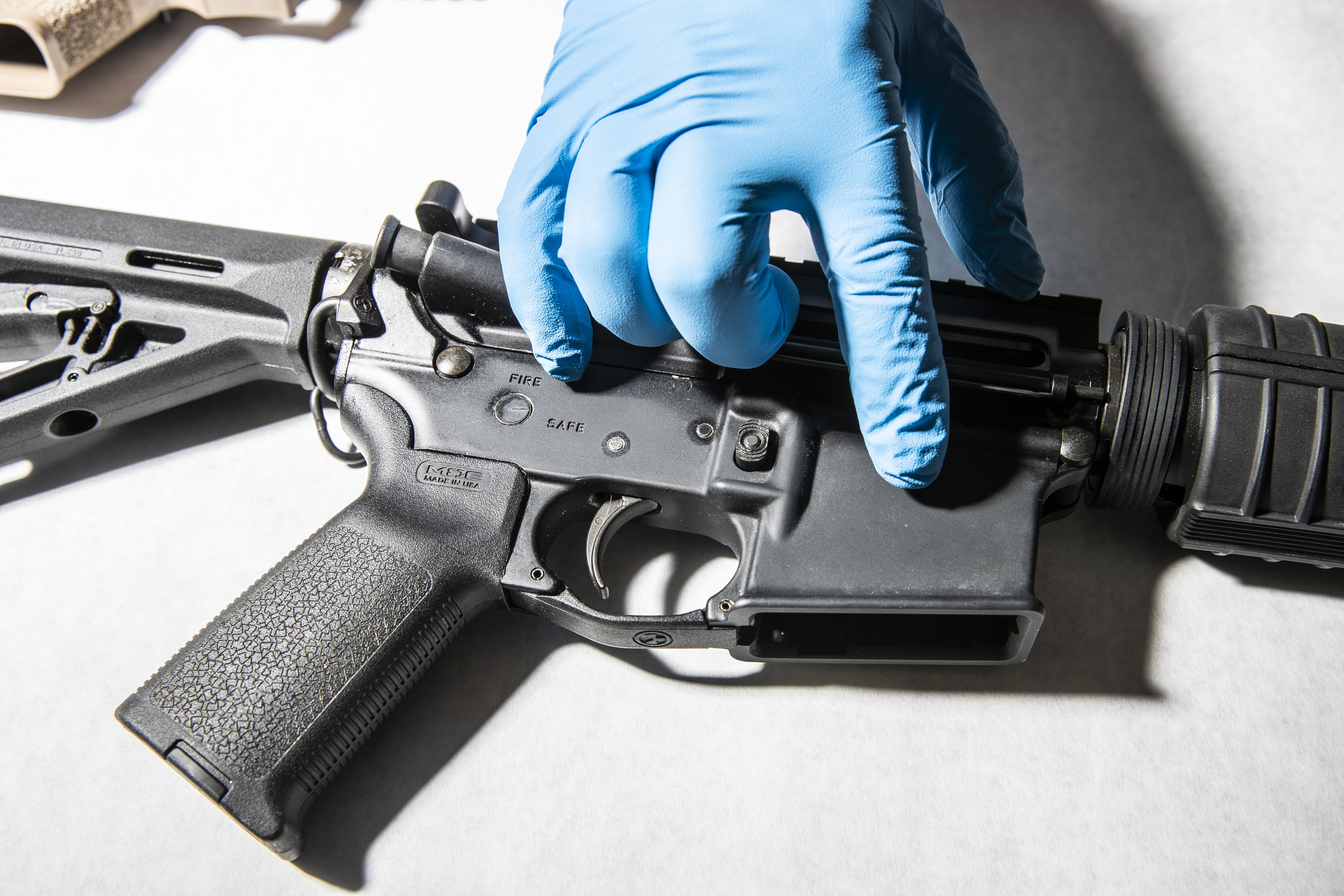"I thought it was a firecracker, to be honest," 17-year-old Isaiah Duncan said.
But the pain the Bronx teen felt didn't come from a firecracker — it came from a bullet, fired outside of his school.
Duncan, one of the students who survived being shot after gunfire erupted near the corner of Saint Ann's Avenue and East 156th Street in the Melrose neighborhood Friday afternoon, spoke for the first time on Monday about the triple shooting that left a classmate dead.
Get Tri-state area news and weather forecasts to your inbox. Sign up for NBC New York newsletters.
The Mott Haven Village Prep junior, and cousin of NBC New York reporter Myles Miller, was simply walking home from school with his girlfriend when the unthinkable happened.
"We were gonna go buy my mom an early birthday gift. And next thing I know, we’re playing around, and I just got hit," said Duncan. "I didn’t know I really got shot until I saw my blood."
He said he tried to stay calm after a bullet struck his thigh, and told his girlfriend to go get his mother.
"I try to be strong," Duncan said.
His mother, Ravin Scott, was at their home at the time of the shooting, just a block away.
"I just ran downstairs, everything was flashing before my eyes, I’m stopping traffic, yelling 'Where’s my son, where’s my son," she told NBC New York, as she held her son's hand while he recovers at the hospital.
Scott raced to the scene before ambulances even arrived, and it was there she witnesses something that haunts any parents' nightmares.
"That has been my worst fear," she said. "I don’t think any parent wants to go through what I’ve been through, or the other victims parents have been going through."
The family quickly realized there were other victims, too.
"I looked back and I see another girl, the girl I know on the floor back there," Duncan said.
That 16-year-old girl was shot in the leg, and is expected to recover. However, her friend, 16-year-old honor student Angellyh Yambo did not survive. Funeral services for the teen are scheduled for Tuesday.
"The young girl was right next to my son. Even in the hospital, I was right there. I seen the young lady," said Scott. "I’m still traumatized. I still can’t get her out of my mind...or imagining my child like that."
Duncan did not know Angellyh, but he and his mother offered their condolences to her family, knowing that the roles easily could have been reversed.
"The bullet could have went anywhere else. I’m just lucky I get to have my leg and just happy I’m alive," he said.
Scott said that she feels for Angellyh's parents, adding that something needs to be done in order to prevent it from happening again.
"What I want is for there to be more police on patrol," the mother said. "The time when it happened, there could have been young kids (around)."
Learning that the alleged 17-year-old shooter, the same age as her son, used a so-called "ghost gun" infuriates Scott even more.
"How did they not red flag that? How do they just send the parts?" she asked.
Scott said she didn't send her younger son to school on Monday, as it is also close to the site of the shootings.
Duncan, an avid basketball player, was worried he'd never be able to play again, but fortunately he's expected to make a full recovery. He said that the city's spiraling gun crisis has made his neighborhood feel unsafe, and pleaded with other teens to put the guns down.
"A lot of people is dying, it could have been your family member. How would you feel?" he said.
Grief counselors continued to help students, teachers and parents on Monday, the first day back in class after the tragedy. Police said none of the three students were intended targets of the shooter, who was in Bronx court two days after his arrest on Saturday. He is next due back in court on April 21.
The Biden administration is unveiling a completed rule aimed at reining in the proliferation of ghost guns, firearms without serial numbers that have been turning up at crime scenes across the nation in increasing numbers.
The White House and the Justice Department argue that regulating the firearms parts and requiring dealers to stamp serial numbers on ghost guns will help drive down violent crime and aid investigators in solving crimes. Gun groups, however, argue that the government is overreaching and that its rule violates federal law.
Generally, firearms manufactured by licensed companies are required to have serial numbers – usually displayed on the frame of the gun – that allow officials to trace the gun back to the manufacturer, the firearms dealer and original purchaser.
Ghost guns, however, are made of parts and are then assembled together. The critical component in building an untraceable gun is what is known as the lower receiver. Some are sold in do-it-yourself kits and the receivers are typically made from metal or polymer.
An unfinished receiver — sometimes referred to as an “80-percent receiver” — can be legally bought online with no serial numbers or other markings on it, no license required. Under the current rules, the federal government does not consider unfinished lower receivers to be firearms.
The new rule changes the current definition of a firearm under federal law to include unfinished parts, like the frame of a handgun or the receiver of a long gun. It says those parts must be licensed and include serial numbers. Manufacturers must also run background checks before a sale — as they do with other commercially made firearms. The requirement applies regardless of how the firearm was made, meaning it includes ghost guns made from individual parts, kits, or by 3D-printers.
Justice Department statistics show that nearly 24,000 ghost guns were recovered by law enforcement at crime scenes and reported to the government from 2016 to 2020. It is hard to say how many are circulating on the streets, in part because in many cases police departments don’t contact the government about the guns because they can’t be traced.



